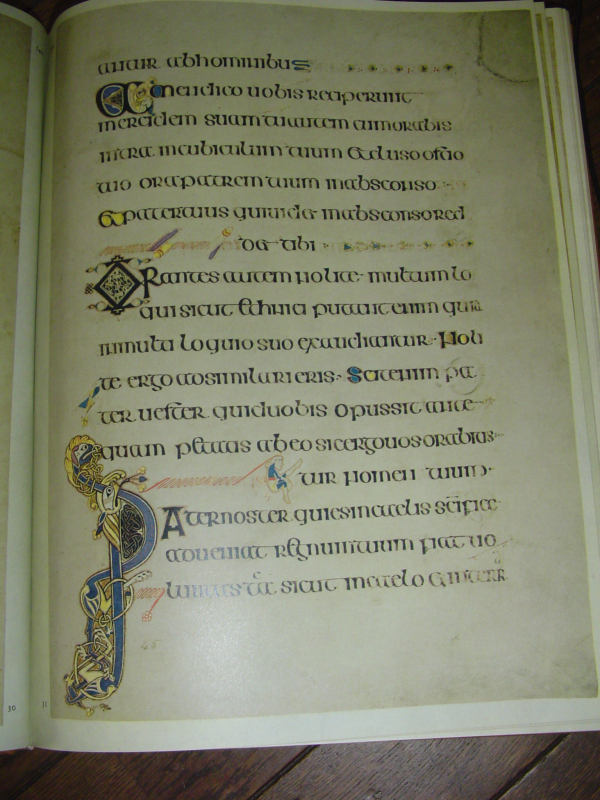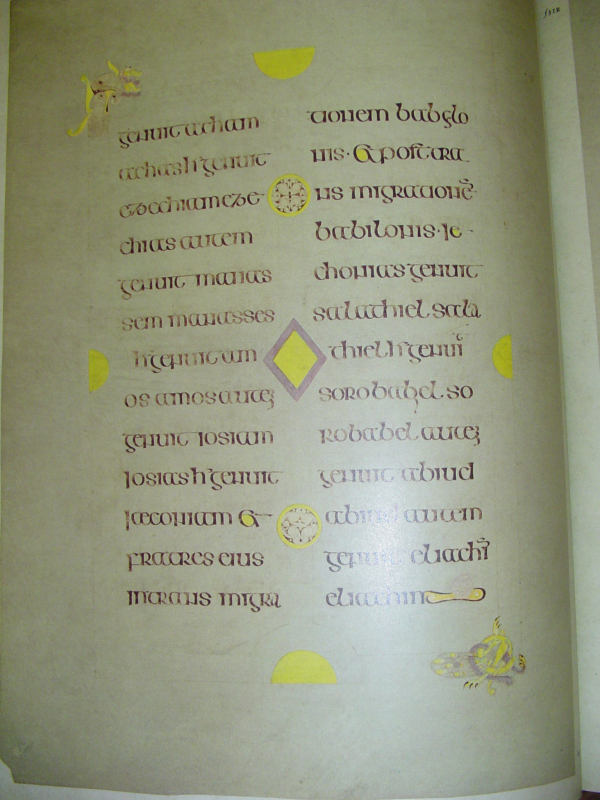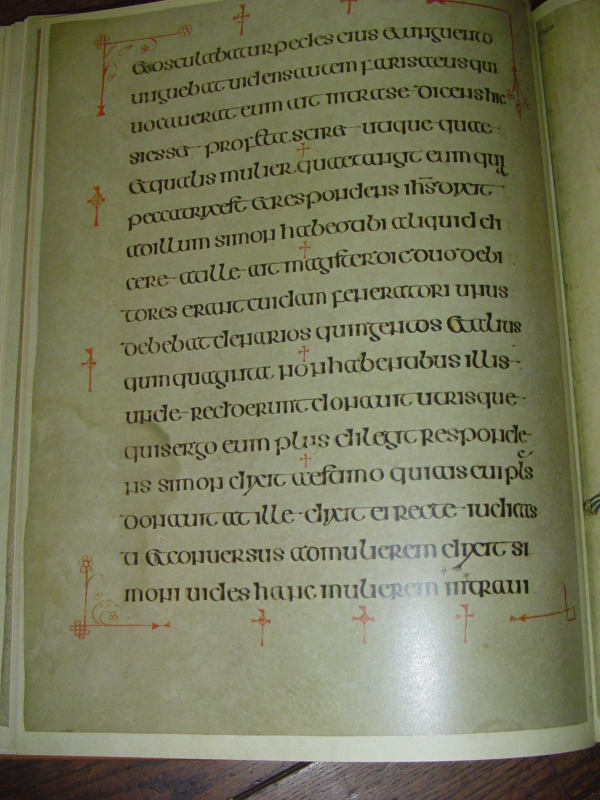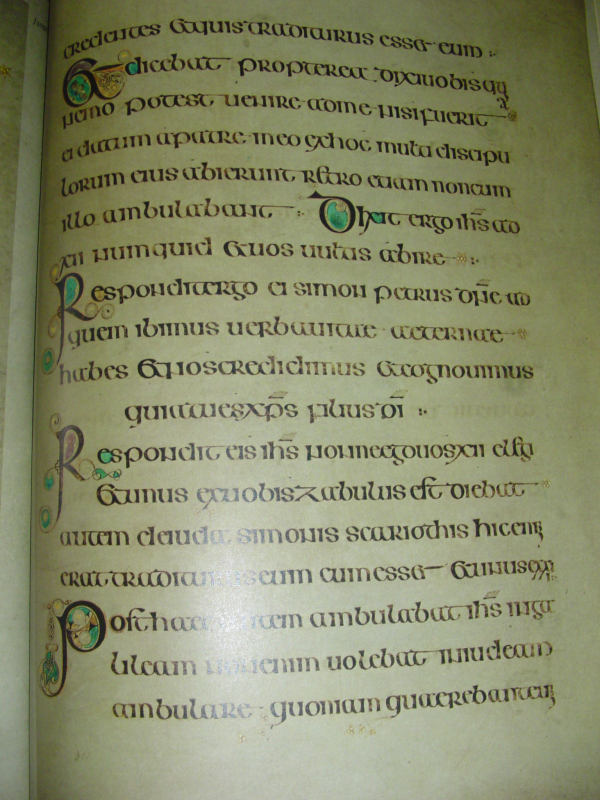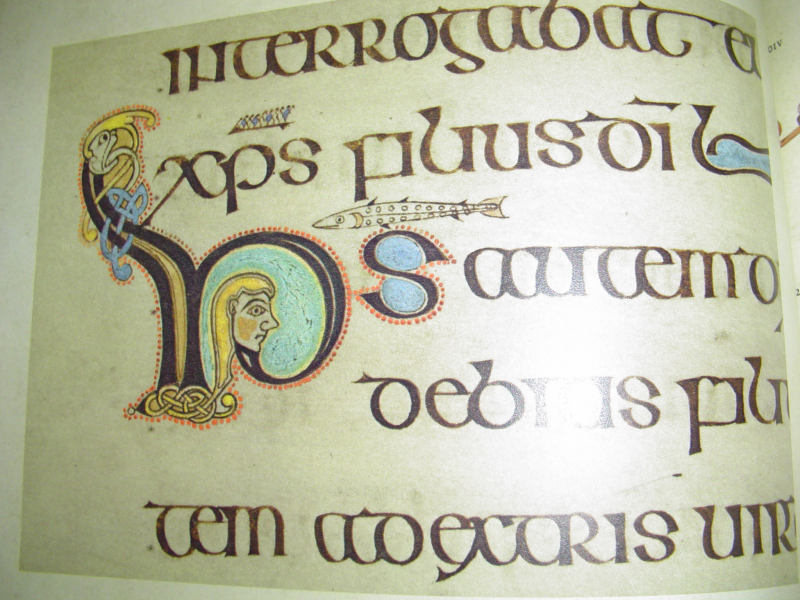The Book of Kells
There’s one other recent acquisition that’s so cool it gets its own separate post.
Last Friday at the Boekenmarkt Spui I bought a beautiful photo-reproduction of (large parts of) the Book of Kells. I’ve put a few amateurish photographs below the fold (they’re fairly large images), and the wikipedia page has lots of more professional ones. (People tend to focus on the carpet pages and full-page illumination extravaganzas, but I actually prefer the mainly textual pages, so that’s what I’ve snapped.)
The cool thing is, the original is permanently on display in the library of Trinity College, Dublin, where I’m going next month! And apparently they turn over a new leaf every day, so if I’m assiduous in my visiting I’ll get to see 14 pages or so. Pretty amazing to think that I’m going to see a book that’s more than a thousand years old — that ink was wet before the first people arrived in New Zealand.
(I also discovered the virtues of being chatty and interested at the book market: when I came back from agonising my way to the decision to buy the stallholder wasn’t there any more, but the bloke on duty sent a runner with my suggestion of knocking the price down a bit, who came back with the message: “It’s for the guy with the hat? Okay then, he can have it.”)
I’ve constrained the images to fit inside the text column, since otherwise the text on the right overlaps them and it all looks horrible. That’s probably going to make the images look a bit shonky though, and you’re missing all that beautiful detail. You can click through to see them at 800×600 without bloggery getting in the way. If anyone is especially interested I can try setting up the lighting better and post (or mail) some full-detail photos (my camera takes 1536×2048). You can also buy the whole Book of Kells on DVD, although there’s something almost sacrilegious about viewing that sort of work on a computer screen…
First a two-page spread, showing on the left the beginnings of the Argumentum of John and the Breves causae of Luke, and on the right more of the Breves causae of Luke (not that I know what these are, I’m just copying from the table of plates). Check out the rich colour of the text on the right and the finely detailed space-filling patterns.
Next is a single page from the Gospel of Matthew. The illumination in the lower left corner is the initial P of ‘Paternoster’ — this is the Lord’s Prayer. Just to the right of the top of the P you can see a little gymnast or yoga adept waving his leg in the air.
The next two, from the Gospels of Matthew and Luke, show some of the variety in ornament and colour to be found — the book consists of 340 folios, while my reproduction has only 126 pages with colour photographs, so I imagine that what it’s missing are the pages with this sort of simpler ornamentation.
More rich colours in this page from the Gospel of John. If you look closely in the upper-left corner you’ll see a bird with serious beak problems, reminding me somehow of Leunig’s Curly Flat characters (which I can’t find online, but if you know them maybe you’ll see what I mean).
And finally, a closeup photo of the closeup photo in which the fish forms an abbreviation of the word ‘Jesus’. I wonder what kind of fish it was? (Note also the hair linking to the base of the I and the neck to the top, in defiance of common sense, and the extraordinary sequence of ligatures on the bottom line — no wonder that reading was a specialised skill reserved for the nobility! It might say tem ad exoris but then again it might say something quite different. Anyone know enough 11th-century Latin to say whether this is at least plausible?)

